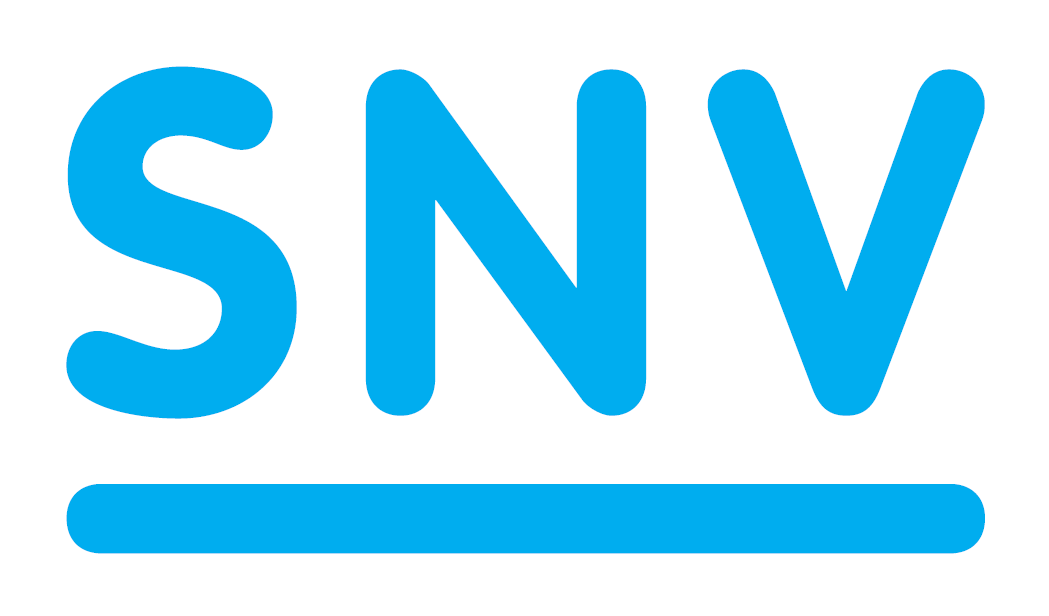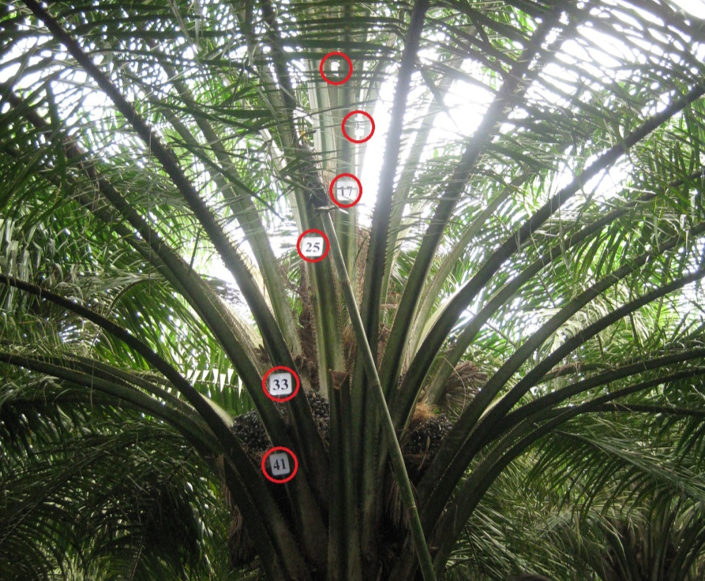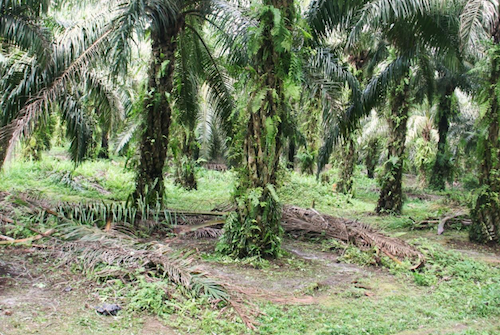Sustainable Oil Palm Farming / Pruning
| |
Download: Module 3: Plantation Maintenance
Contents
Background
Good pruning is necessary for the most efficient use of fertilisers and to create an easily accessible plantation. Therefore the optimum number of leaves should be kept on the palms.
When pruning, remember:
- More fronds are better for production (palms can capture more sunlight)
- Dead or dying leaves hold nutrients which should be recycled
- If palms are tall it will be difficult to do good harvesting when there are many fronds
Pruned leaves decompose fastest when they are in touch with the soil and form an important source of food for palm roots. By stacking the fronds in a box shape, the nutrients and the organic matter are spread out, and the leaves decompose faster because the stacks are not too high. Stacking leaves also keeps them out of the harvester’s way, and helps to prevent soil erosion.
The appearance and organisation of oil palm leaves
The youngest leaves appear on the top and the older ones are at the bottom:
- The leaves grow in spirals of eight (see Figure 21)
- Leaf 1 is the youngest fully open leaf, on the top of the palm
- The leaf beneath Leaf 1 is Leaf 9 (1+8, because there are eight leaves on one spiral)
- The leaf below Leaf 9 is Leaf 17
- The leaf below Leaf 17 is Leaf 25, then Leaf 33, Leaf 41 and so on
About two new leaves appear per month. New leaves appear faster in young palms and slower in old palms. An inflorescence (a stalk with many flowers) is formed above each leaf, which can become male or female (Figure 5 male / Figure 5 female), or be aborted (no inflorescence at all). If the palm is stressed (e.g. by drought or lack of nutrients), more male inflorescences are formed and more inflorescences are aborted. Female inflorescences form bunches which are usually ripe about 16 months (32 leaves) after the supporting leaf has appeared and six months after the inflorescence has opened.
Goal
- Enable palms to capture the maximum amount of sunlight
- Ensure there is no waste of nutrients in unproductive fronds
- Enable fast, easy and complete harvesting
- Create a clean and efficiently organised plantation
- Conserve soil quality and nutrients
- Enable fast decomposition of pruned fronds
Standard
- Pruning only dead fronds in palms less than 4 years after planting
- Pruning down to 48—56 fronds per palm (or: 2—3 fronds below the last ripe bunch) for palms that are 5—7 years old
- Pruning down to 40—48 fronds per palm (or: 1—2 fronds below the last ripe bunch) for palms that are 8—15 years old
- Pruning down to ~40 fronds per palm (or: 1 frond below the last ripe bunch) for palms that are more than 15 years old
- Fronds butts are cut off close to the trunk
- Fronds are cut in two and stacked on the frond stack in a box-shape, with the bottom part behind the palms and the top part between the palms
Timing
- Shortly before the peak production season (so that harvesting can be done more efficiently)
- During the dry period (if possible)
Frequency
Twice per year
Labour time required
Corrective pruning: 2 days per hectare
Equipment and materials
- Chisel (for shorter palms)
- Harvesting sickle (for tall palms)
- Axe, chisel or bush knife (to cut the frond in two)
Who
Farmers and their families or hired labourers
How
To prune oil palms:
| Step 1. | Cut off all dead and dying leaves. |
| Step 2. | Count the number of remaining spirals and determine which leaves need to be cut off. |
| Step 3. | Cut the leaves as close to the trunk as possible, without damaging nearby bunches, fronds, or the palm trunk. |
| Step 4. | After pruning, cut each leaf into two halves, and throw the bottom half (thick stem part with sharp spikes) onto the frond stack behind the palm to prevent injuries. |
| Step 5. | Place the top half on the frond stack on the right or left side of the palm to make the so-called “box shape” (see Figure 23) |
Data recording
Every pruning activity should be recorded in a logbook as shown in the example below.
| Date | Time | Location | Activity | Input type | Input amount | Input costs | Labour input | Labour costs | |
| People | Hours | ||||||||
| 16/01/13 | Field 3 | Pruning | 1 | 16 | 160000 | ||||
Acknowledgements
The material from Pruning is sourced from Smallholder Oil Palm Handbook and put together by Lotte Suzanne Woittiez (Wageningen Universit) and Haryono Sadikin, Sri Turhina, Hidayat Dani, Tri Purba Dukan, and Hans Smit (SNV) in August 2016. See Module 3: Plantation Maintenance for more information.






